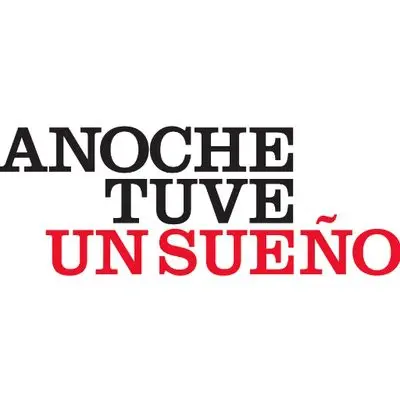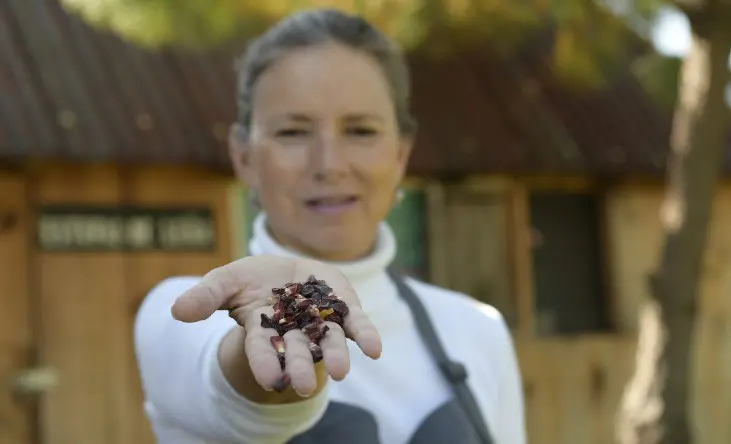SUSTAINABILITY 17.02.2021
“Corn is key to generating employment for poor women and supporting the indigenous community”

Anoche tuve un sueño
Dr. Marta Astier (Principal Researcher, Centro de Investigaciones en Geografía Ambiental, National Autonomous University of Mexico). She arrived in Mexico in the early 1980s. As a Basque native from San Sebastian, she works at the National Autonomous University of Mexico (UNAM) and her work focuses on the research and conservation of agrobiodiversity and local sustainable food systems.
The Tsiri network is a citizen effort that seeks to rescue the gastronomic, cultural and agronomic wealth represented by the local varieties of organic corn and the farming lifestyle that sustains them in the region of Pátzcuaro-Zirahuén. By selling artisan tortillas, it seeks to give added value to native corn, locally called criollo, which would otherwise have no market.
“Getting support from the Mexican government is one of the challenges: eating is a political act”
The network was formed in 2009, as a result of the collaboration between researchers and technicians from Grupo Interdisciplinario de Tecnología Rural Apropiada (GIRA — Interdisciplinary Group for Appropriate Rural Technology) and UNAM’s Centro de Investigaciones en Geografía Ambiental (CIGA — Center of Investigations in Environmental Geography), with the aim of creating a direct link between local organic corn producers, tortilla workshops and conscious consumers.
Marta, how did you get here? Through my studies and action-research projects, I have realized the importance of preserving Mexico’s food and indigenous culture and its native corn, as this country is corn’s center of origin and diversification. Even just where I live, there are 10 varieties (types) of corn that are native to the area, and there is a thousand-year-old culture around the use, exploitation and preparation of these corns. The production and sale of original handmade tortilla, for example, is a key point for conserving corn and for generating employment among poor women who come from indigenous populations and communities, where they are the pillars of the family economy.
“We seek to capitalize on criollo corn through artisan products”
As an agronomist, I started researching farming agriculture and its best practices. However, I wanted to go beyond the soil and I delved into the other socio-cultural and economic motivations behind the production and valuation of native corn. Tortilla is the main by-product of corn for human consumption in Mexico, and also provides added value. Tortilla and corn, like bread and wheat in Spain, are an essential pillar of agriculture and food culture.
How did you start out on this journey? In the 2000s, there was no agricultural policy on the conservation of native corns. That’s when the first state and regional trade fairs for this product began. In 2007, a campaign against genetically modified corn began in Mexico called ‘No corn, no country.’ That same year, the President of Mexico decreed a ban on genetically modified corn and decreed the gradual and upcoming withdrawal in 2023 of the herbicide glyphosate, the world’s most used herbicide.
“We want to improve the lives and incomes of indigenous women and conserve native corn”
In order to achieve this, the sustainability of the food and production systems in these regions must also be assessed. Talking about sustainability in abstract terms is difficult, as not even farmers, consumers, nor politicians know what we are talking about. We will only be able to clarify this concept by making assessments over time, based on indicator measurements. We will do so underpinned by a methodology that we have created, which includes the three ecological, economic and social dimensions. These indicators allow us to measure activities, practices and processes, which tell us which models are most sustainable. If we didn’t measure these indicators, we would never know where to go or what would be the ideal model to replicate.

That’s where agroecology comes in. Yes, because agroecology is a science that feeds on Western and conventional scientific knowledge, as well as on the knowledge of indigenous producers and farmers. We have learned a great deal from these practices and are only just beginning to understand the rationality, beyond capitalist economic logic, of the decisions that farmers make when conducting their activities. Agroecology is, above all, a social and political movement. If we don’t change national and international policies, and consumers don’t get involved, we won’t achieve anything. Agroecology is so much more than an earth science, as it involves a change of mentality in both the production and consumption of food: eating is a political act.
Organic agriculture involves eco-friendly agricultural products, but are all organic products from eco-friendly agriculture? Organic products are more associated with selling, with how they are certified and how they are displayed on the market. In order to be able to sell them as organic, they have to go through a certification process and they must meet quality standards. In Mexico, for example, these standards exclusively seek to ensure that there are no traces of toxic agrochemicals left in food that could harm human health. However, there are other certification companies, which are in the minority, that are also concerned with the preservation of natural resources (soil, water, biodiversity). In agroecology, we are more concerned about processes than inputs. We focus on redesigning the agricultural system and the food system as a whole.
Is redesigning the system difficult? It’s very complicated. Knowledge is lacking and, as such, we use sustainability assessments to tell us where we need to go. We also need time, as this process is a very long journey and time is not always available.
Of course, I also assume that support will be needed from institutions and governments, as well as from universities and academics. It would be much easier if governments and states supported this transition process.
Is there more support in Latin America? In Mexico, definitely not. This is one of the biggest challenges because, at the moment, we don’t have any support for research and strategy design in the framework of agroecology for conserving farming agriculture and native corn. With the new government in power, we may be able to get the support needed to develop a program to transition toward agroecology. Time will tell whether or not this occurs and whether it translates into policies, programs and incentives for producers to gradually stop using agrochemicals. I know it’s complicated, and it’s a huge challenge, but we’re working to achieve it.

There’s a long way to go, but do we have reason to be optimistic? Yes, of course. The NGO ‘El poder del consumidor’ (Consumer Power), together with other organizations, has succeeded in applying new food labels, for example, which indicate products that contain excess sugars and salt, as well as saturated fats.
Is it working? Yes, it has been very effective, as Mexico is one of the world’s countries with the most diabetic children who are also overweight.
In addition to this program, a law for the conservation of native corn has just been passed, but has not translated into any concrete action as of yet… Yes, we have to wait and see what this law translates into. For the time being, there is a small government subsidy for small corn producers and the ‘Sembrando vida’ (Seeding Life) program that is trying to create and strengthen agroforestry systems necessary for planting corn.
You are also involved in an initiative to change and tighten regulations on what an authentic tortilla is. Tortillas, from the pre-Hispanic era, are made based on a process where the corn is transformed through nixtamalization. This process involves cooking corn grains with water and lime, which significantly increases the nutritional level of the grains. However, current tortilla regulations are very lax, as they allow additives, flour, preservatives and artificial dyes in commercial tortillas, moving further and further away from the authentic tortilla. I have joined this ‘Alianza por la tortilla’ (Tortilla Alliance) campaign, so that original 100-percent nixtamal tortilla can be distinguished from other tortillas, because I believe that a good tortilla is the foundation of healthy eating, gastronomy and the Mexican cultural identity.
Is it related to the Tsiri network? The Tsiri network is a small cooperative of ten women and three producers, which I created to directly provide consumers with products made from native corn transformed into tortillas, tostadas, cookies, etc. at a fair price. We have been working with blue corn, the Purhépecha variety, for more than 11 years. The idea is to improve the lives and incomes of farmers, indigenous corn-producing women, and conserve native corn and tortilla food culture.
It operates in alternative markets in the city of Morelia, on the Morelia campus of UNAM and in many homes of environmentally conscious consumers. The Tsiri Network is an experience that continues to grow thanks to the love of its people for the land and corn, and that seeks to go further and further, bringing artisan, organic products to an increasing number of consumers.
What does Marta Astier dream of? I dream of more organic agriculture in Mexico with a greater appreciation for agriculture that does not cause pollution and that provides healthy products, as well as the increasingly widespread consumption of good tortillas. I only hope that experiences like the Tsiri Network will grow and reach many more areas and many more consumers.
